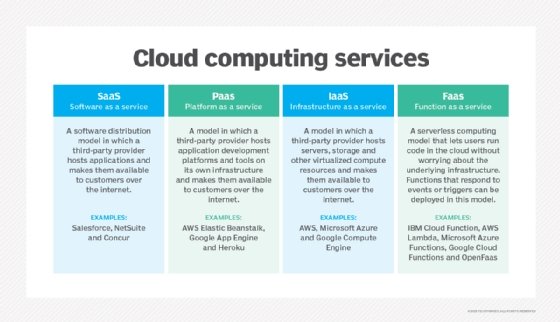Simplify Your Framework With Cloud Services
As businesses navigate the ever-evolving landscape of modern technology and information monitoring, the duty of cloud solutions in simplifying infrastructure has actually come to be increasingly famous. The attraction of structured processes, boosted performance, and improved source appropriation with cloud remedies is indisputable. The journey towards a more affordable and agile IT framework includes even more than simply moving to the cloud. It needs a tactical approach and a deep understanding of the subtleties of cloud adoption. So, exactly how can companies properly browse this transition and genuinely open the capacity of cloud services for simplifying their infrastructure?
Benefits of Cloud Solutions
Cloud solutions use a structured technique to managing IT infrastructure, providing companies with scalability, versatility, and cost-efficiency. One of the vital benefits of cloud solutions is the scalability they use.
Furthermore, cloud services remove the demand for organizations to spend in costly software and hardware. This cost-efficiency is a considerable advantage, particularly for little to medium-sized business wanting to minimize upfront prices. By utilizing cloud services, businesses can access top notch IT resources without the substantial price linked with typical facilities setups.
Furthermore, cloud solutions supply services with the flexibility to access their data and applications from anywhere with a web link. This degree of access enhances partnership among groups, enables remote work, and boosts total performance. The versatility offered by cloud services empowers companies to adjust promptly to changing market conditions and customer demands.
Expense Financial Savings and Scalability
In addition to the functional advantages highlighted earlier, the integration of cloud services right into a firm's infrastructure comes up with significant cost financial savings and improved scalability. Cloud solutions use a pay-as-you-go design, allowing organizations to range sources up or down based on present requirements, consequently preventing the expenses related to preserving excess capacity. This versatility allows companies to adapt rapidly to rising and fall needs without sustaining unneeded costs.
Moreover, cloud solutions remove the requirement for upfront financial investments in equipment and software program, lowering capital investment. Operating budget are likewise reduced as companies no more require to manage and keep physical web servers, causing lower energy intake and IT staffing expenses. Additionally, cloud services provide automated updates and maintenance, ensuring that the infrastructure continues to be secure and up-to-date without calling for hands-on treatments.
Boosted Safety And Security Measures
Applying strict protection actions is critical when integrating cloud solutions right into a firm's facilities to guard sensitive data and guarantee compliance with sector guidelines. Cloud solution carriers use improved safety and security functions such as data encryption, firewall defense, and multi-factor verification to minimize cybersecurity dangers.
Additionally, regular protection audits and conformity assessments aid determine vulnerabilities and make sure adherence to industry standards. Firms can likewise gain from attributes like automated security updates and real-time risk monitoring supplied by cloud provider. By prioritizing security procedures and remaining aggressive in resolving potential threats, companies can confidently utilize cloud services while shielding their important information from unapproved access or violations.
Transitioning to Cloud Framework
To efficiently incorporate cloud services like it right into a firm's facilities, a structured strategy that attends to the shift in the direction of cloud-based services is vital. Transitioning to shadow framework includes cautious preparation and implementation to ensure a smooth movement process. The very first step is to analyze the current framework and identify which applications and systems appropriate for movement to the cloud. This assessment must take into consideration elements such as information level of sensitivity, compliance demands, and efficiency requirements.
Once the assessment is complete, a movement approach need to be created. This technique must detail the timeline, resources, and obligations for additional hints relocating each part to the cloud. It is vital to interact this plan clearly to all stakeholders to ensure alignment and minimize disruptions throughout the transition.
Throughout the migration surveillance, testing and process are important to determine and attend to any concerns without delay. Routine checkpoints ought to be developed to track progression and make essential modifications. Additionally, training for staff members on utilizing cloud solutions must be offered to ensure an effective transition and make the most of the advantages of the new framework.
Best Practices for Cloud Adoption
Successful adoption of cloud solutions pivots on the critical positioning of service objectives with technological capabilities and business preparedness. To guarantee a smooth transition to the cloud, companies ought to begin by conducting a comprehensive evaluation of their existing framework and determining which work are best fit for cloud migration. It is critical to include key stakeholders from various divisions in the decision-making process to acquire buy-in and attend to any kind of issues beforehand.
Another best technique for cloud adoption is to prioritize protection and conformity. Organizations needs to thoroughly review the security steps offered by cloud provider and ensure that their data is shielded according to industry standards and regulatory demands. Implementing durable information security, accessibility controls, and normal safety and security audits can aid minimize threats connected with cloud adoption.

Final Thought

As click here to find out more services navigate the ever-evolving landscape of technology and information management, the function of cloud solutions in simplifying facilities has actually come to be increasingly popular - cloud services press release. Just how can companies properly navigate this transition and truly unlock the capacity of cloud solutions for simplifying their framework?
Cloud solutions provide a structured approach to managing IT framework, providing organizations with cost-efficiency, versatility, and scalability. By making use of cloud solutions, organizations can access high-grade IT sources without the hefty price tag linked with conventional framework arrangements.
To make certain a smooth change to the cloud, companies need to start by carrying out a detailed assessment of their current facilities and identifying which workloads are best matched for cloud movement.